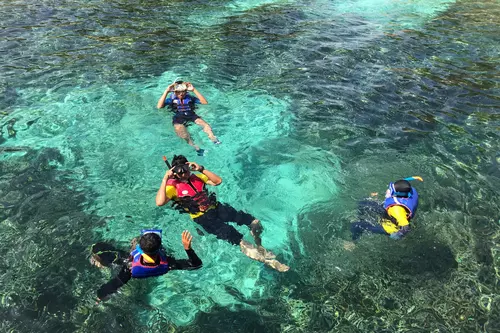Course Set - Inland Open Water Lifeguard (Pre-requisite: HLTAID011 Provide First Aid) - HLTAID009, SISCAQU019, SISCAQU021, SISCAQU022 & SISCAQU029
This course is designed for lifeguards, outdoor recreation leaders, and others responsible for supervising participant safety in open water environments. It focuses on conducting complex rescues in challenging conditions, taking into account prevailing weather and environmental hazards, and includes both swim-based and non-motorised craft rescues (such as rescue boards, surfboards, and paddleboards). The program also covers snorkel supervision/watch and the oversight of competitive open water swimming events, including triathlon swim legs. To enrol, students must already hold a current HLTAID011 Provide First Aid qualification.
Please note, this course covers both indoor and outdoor swimming environments, whether they are built or natural flatwater swimming and recreation areas such as lakes, lagoons, dams, flatwater or slow-moving rivers as well as built recreation facilities such as wave parks and inland beach/lagoons which replicate a natural environment.
The course applies to individuals who may be required to provide a first aid response to a casualty in a range of situations, including community and workplace settings in line with first aid guidelines determined by the Australian Resuscitation Council (ARC) and other Australian national peak clinical bodies.
As this unit applies particularly to open water lifeguards and individuals such as outdoor recreation leaders, who complete complex water rescues, it is highly recommended that students will have a basic understanding of performing water rescues, prior to undertaking this unit. In addition, it is recommended students can swim 400 metres in less than 8 minutes.
Units Delivered
The following units will be included in your certificate:

